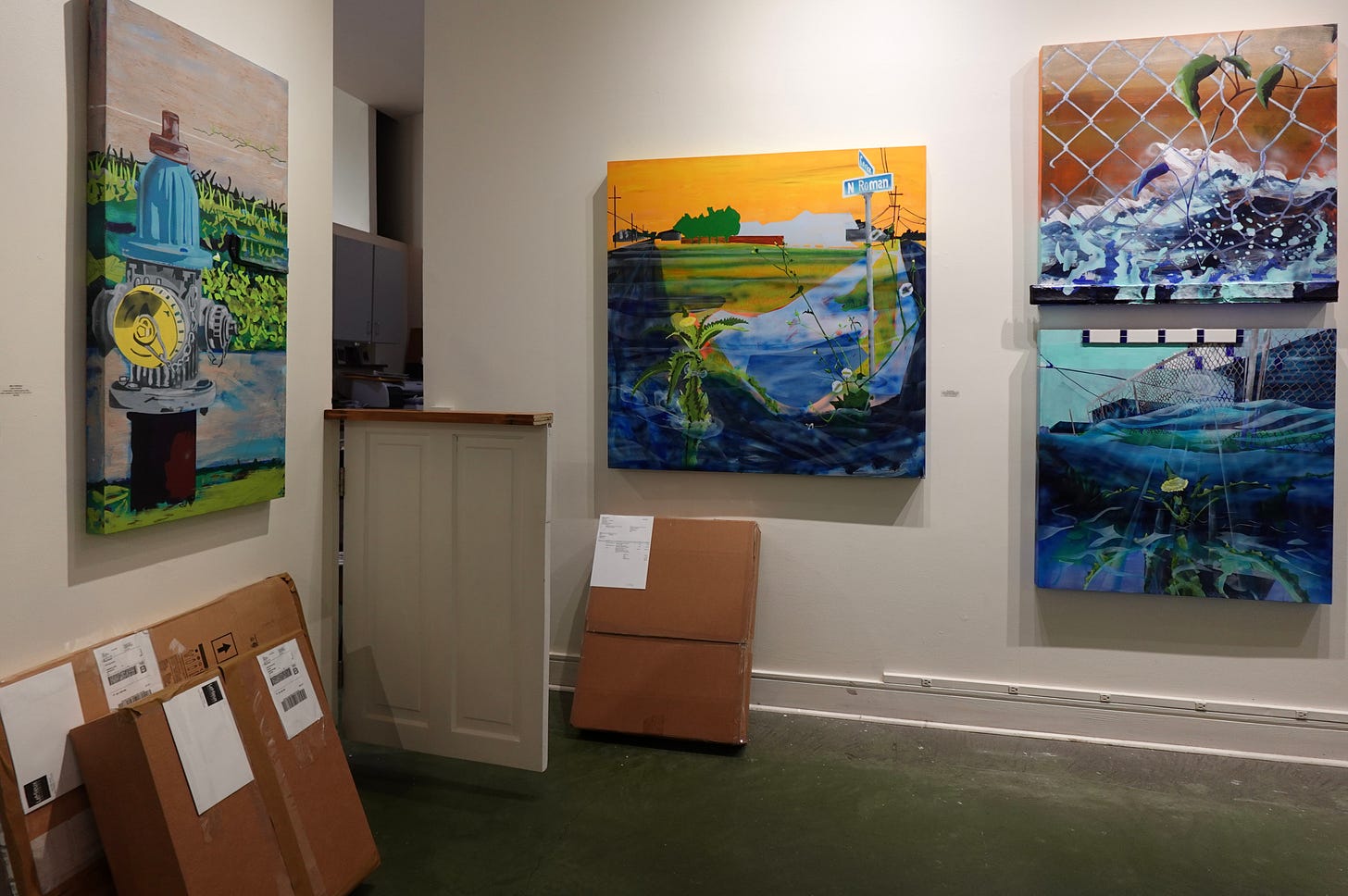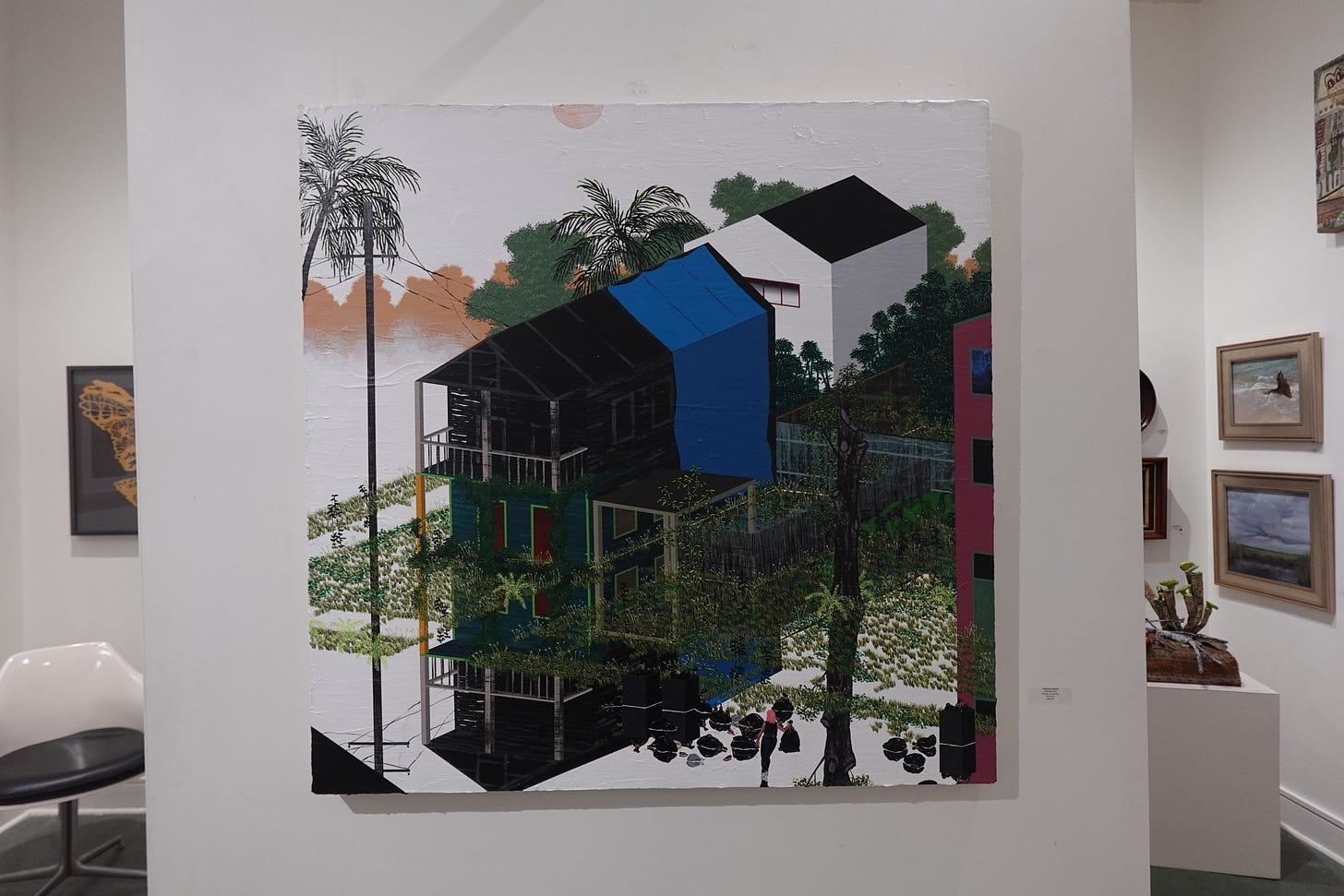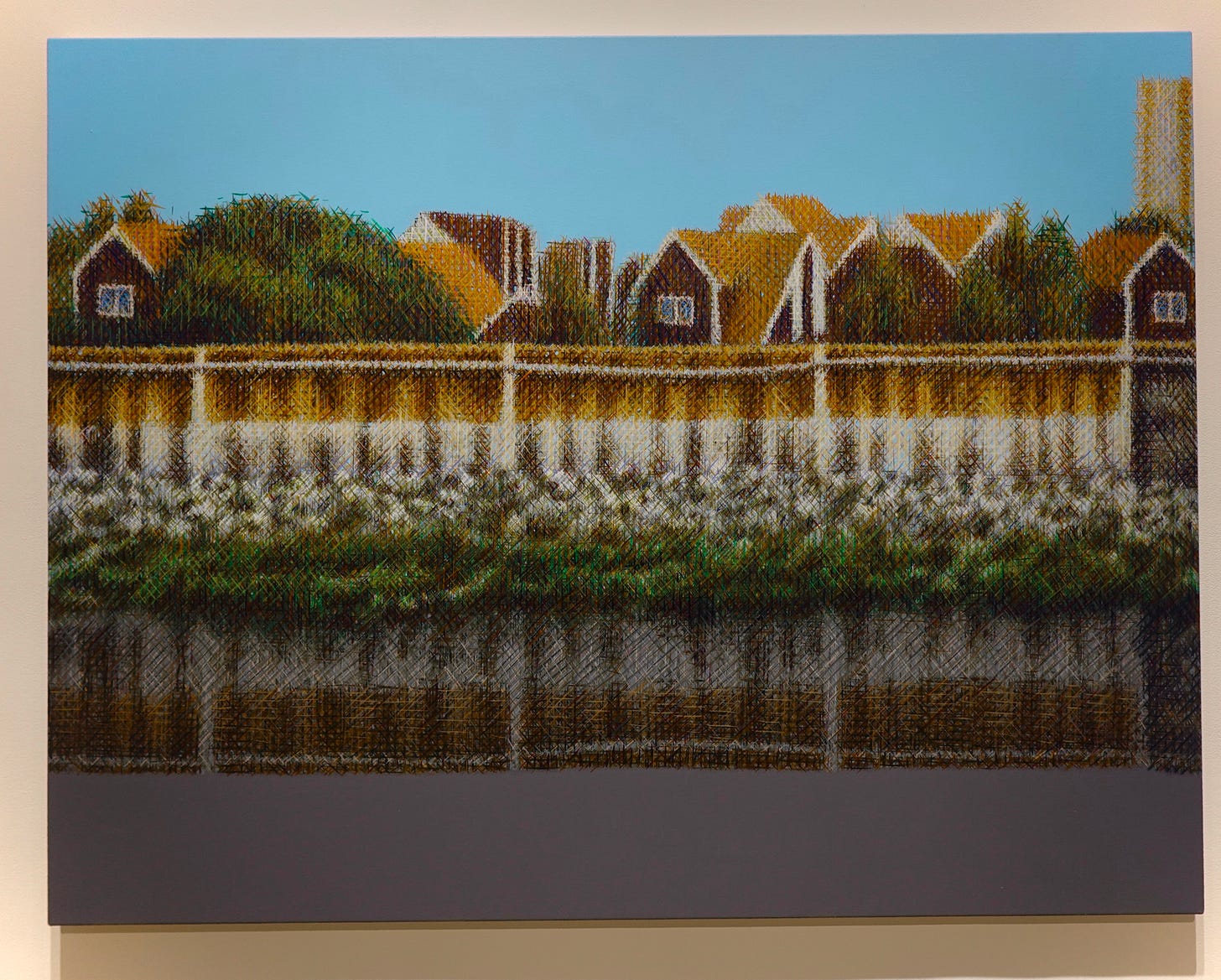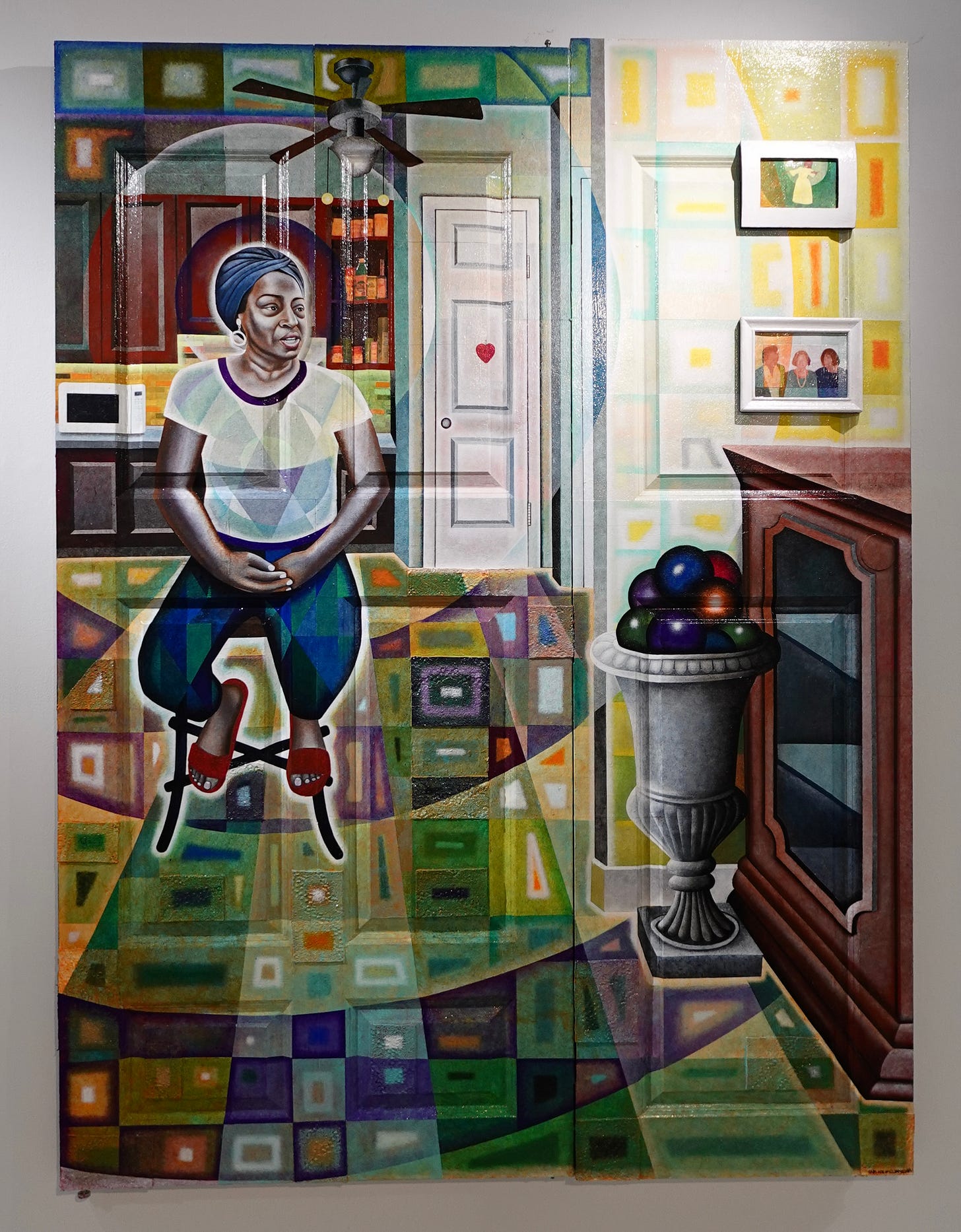
Hi.
I’ve been thinking about how I write about art and about “negative” art criticism. And I’ve been thinking about how and why I lean away from “art criticism” to describe what I do.
Mostly, I think of what I do as describing my experience with artwork, where and how it hits, sometimes what art historical or contemporary art I think it relates to, and digressions—whether it makes me think of a Fugazi song or a Christmas movie. I embrace and share those digressions for two reasons:
One, I want to record them for my own purposes, to kick the can of those thoughts down the road. (I am suddenly sad to remember kicking a can down dark Brooklyn streets for what seemed like miles only to search for the face of my fellow-kicker and cannot remember. Please reach out if that was you.)
Two, I want to invite other viewers, especially those without many art historical or current art references, to do the same. As a reader, I’d rather hear, “this picture reminds me of this one time…” than “The bold use of color in this painting, particularly the contrast between the crimson sunset and the emerald foreground, creates a visual dynamism blah blah blah.” I want to hear about and write about the contact point of art and our lives.
That said,
There is a place for critique, and not just description or praise.
Quick stop while I looked up how the internet defines art criticism—the evaluation and analysis of works of art, often focusing on their aesthetic qualities and significance. Hm.
Evaluation, analysis…What I look for is desire. I want to believe each artwork comes from the furnace of desire, of yearning, and effort. What is disheartening, is work that looks habitual, overly explained, and work that has traces of market concerns in it.
In short—this is a longer conversation and I am running out of space and time here—I like to write about work I respect or work that generates an experience I find interesting. But several people have nudged me lately about voicing in writing some of my complaints, things that bother or that I don’t like when I’m out there looking at art.
So I’ll put one here, below, not targeting the art (which, in a sense I’m defending) but the gallery and how it’s presenting the work.
I’d love to hear your ideas about art writing, it’s function, when it should and shouldn’t be critical… and anything else that comes up here, kicking the can of these thoughts down the road.
e
Miro Hoffman, Summer Rain at LeMieux Galleries

I love the titles of these works and the theme of water and flooding—a “theme” we in New Orleans live with—articulated in an unexpected and not joy-filled but joy inclusive way.
Here is my complaint: Not only does Miro’s work feel crammed in this space, going to a show and seeing packages blocking my view of individual works feels disrespectful—to the work, the artist, and to me the viewer.
For all I know the boxes in the photo above were there for a brief fifteen minutes, but those were the minutes I was there in the gallery to encounter the work. It affects the way the work is seen. The gallery should strive to offer the best possible conditions in which to see the work. Not all factors can be controlled but some can. Like where packages go and maybe how many works can be seen without cramming the elevator.
Miro’s work is so much about surface, close viewing is part of it. But it also needs some elbow room and breathing space; it’s outdoors subject also needs to seen from a distance. The work deserves it.
I was glad to see this piece by Thomas Deaton in the back of LeMieux Galleries. So much of the work I saw that day included outdoor urban or semi-urban spaces consolidated into flat shapes. The mark-making and surfaces are all so different.
Donald Moffett and Wayne Gonzalez at Arthur Roger
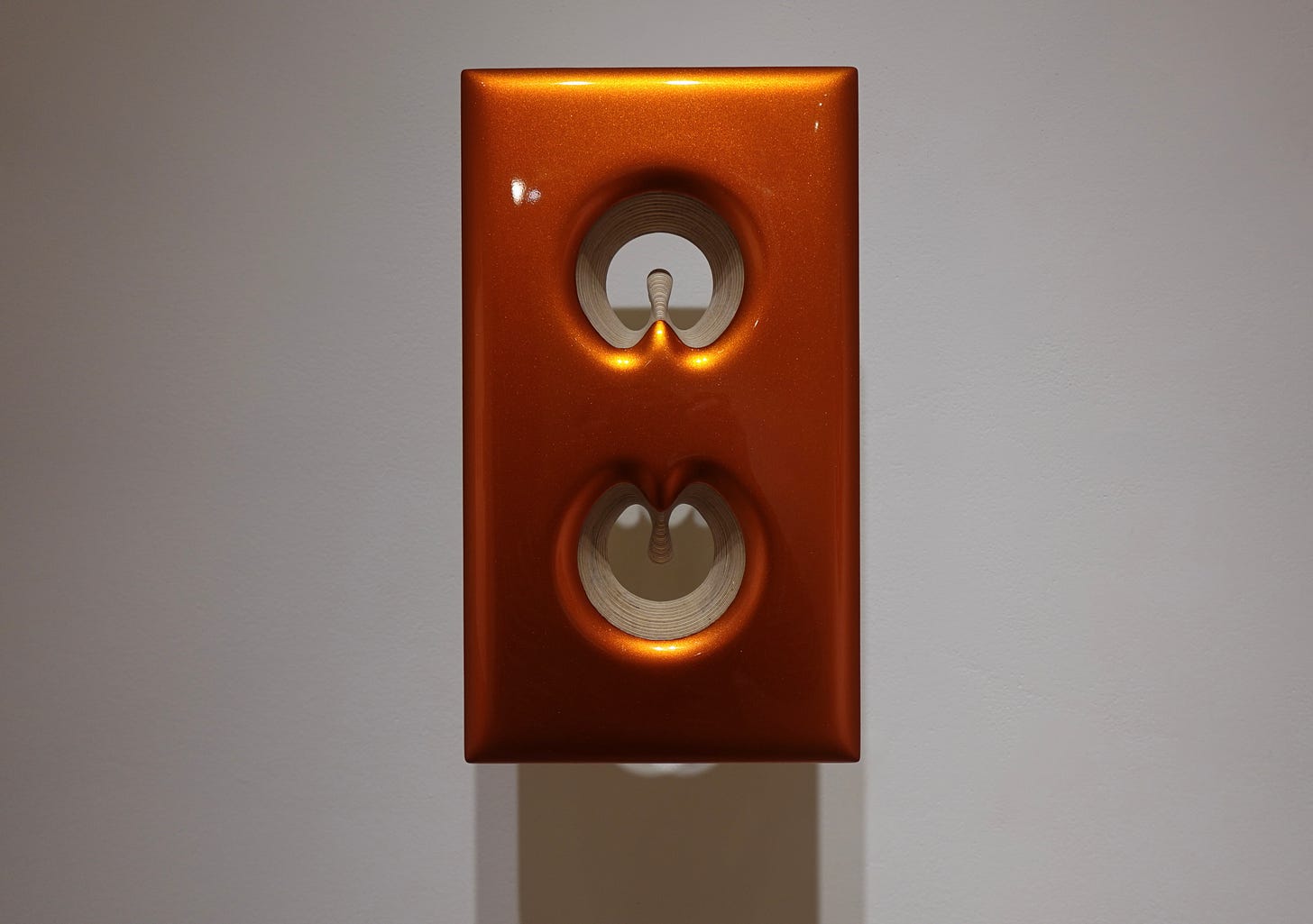
I mostly want art to break (or fill) my heart or confuse me. Daniel Moffett’s work was confusing and I liked that.
How close can I get to these works by Wayne Gonzalez? I asked myself. The one titled 17th Street Canal reminded me of a walk I took in Eindhoven where the neatness and geometry of the buildings and water made me feel messy and abstracted, not an unpleasant feeling.
Six Degrees of Separation, group exhibition at Smith Contemporary
Hooray! There is a new art gallery on Julia Street and not only is there white space on the walls between works, there is a BOOK STORE in the back.
…
PS I don’t know the economics of running an art gallery and can’t imagine it’s easy. I understand cramming work into a space happens for many different reasons. But when it affects the relationship between art and viewer, I’d like to gently ask for more consideration. Many many years ago I submitted something to a magazine, some poems maybe. I was pretty young. My work was returned with the comment “A little attention would show some respect.” I don’t remember where I had failed, maybe misspelling the editors name or sending different poems than the ones I had mentioned in my cover letter. I f*cked it up and felt like a dumbass. But that sentence stayed with me “A little attention would show some respect.”




